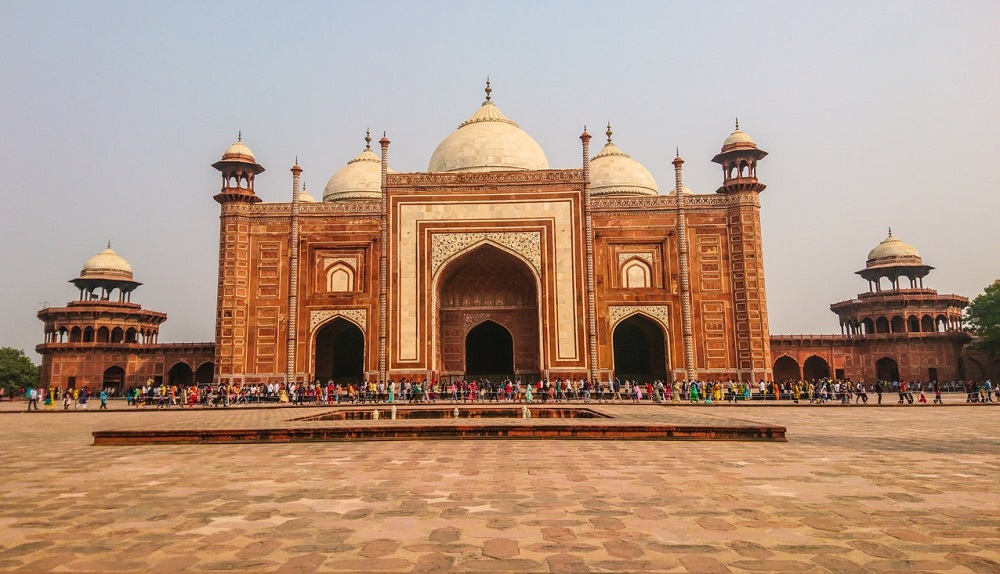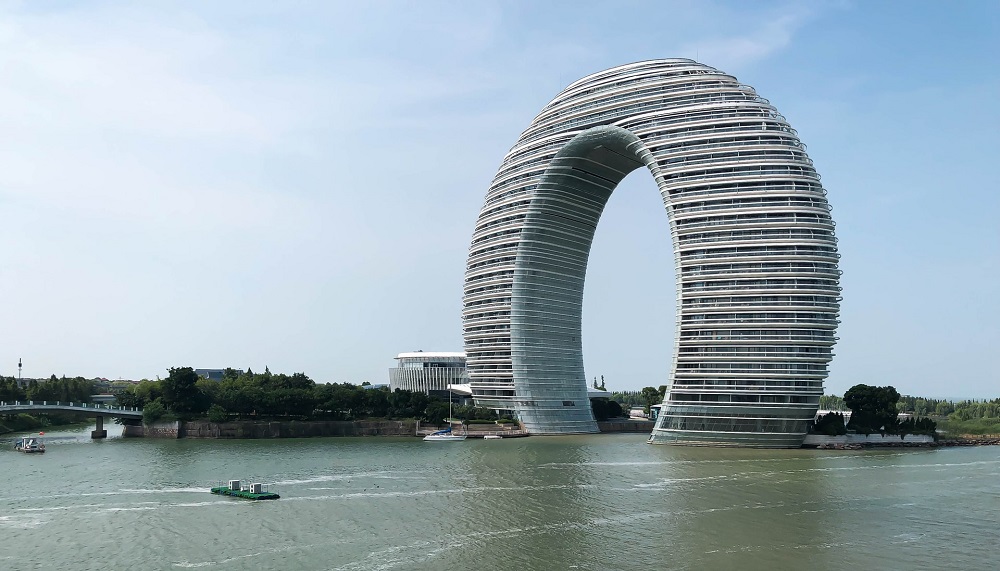U.S. demand and occupancy continued to surprise and delight as both measures rose again during 19-25 September 2021, which was the second consecutive week of such gains. Most industry observers expected a moderate to sharp performance decrease in the weeks after Labor Day given the seasonal return to in-person schooling as well as the increase in COVID hospitalizations and a low volume of business travel. Occupancy for the week advanced to 63.2%, up 0.3 points week on week and 89% of the comparable level from 2019. During the summer, from the week of Memorial Day to the week of Labor Day, occupancy averaged 66.1% and 91% of 2019’s levels.
STR’s monthly 51-chart map focusing on revenue per available room (RevPAR) on a total-room-inventory basis shows a variety of recent national/regional market trends as well as the general pace of the industry’s continued recovery from the pandemic. With Labor Day marking the unofficial end of the summer leisure-oriented travel season, recent weeks have produced a dip from summer peaks in many markets with ground lost from 2019 RevPAR levels. This expected seasonal slowing in U.S. hotel business is evidenced in most states’ performance.
In an unexpected turn, U.S. demand and occupancy advanced in the latest week of reporting (12-18 September 2021) to the best levels of the past four weeks. Weekly demand increased 1.2 million rooms to 24.3 million, which was the largest weekly gain of the past nine weeks, pushing occupancy to 63.0%. Subdued demand was expected this week due to the mid-week observance of Yom Kippur. Daily occupancy advanced every day of the week, except Sunday, growing week on week and day on day, culminating in a level of 78% on Saturday.
With summer ending and the much-needed leisure travel surge waning, much of the industry’s attention and focus shifts to business travel. For true recovery to occur, the travel and hospitality industry needs to see business travel return to pre-pandemic levels. Unfortunately, the prospects for such a return do not appear good at the moment. The Delta variant continues to disrupt the reopening of economies in many parts of the world and, indeed, some countries are grappling with previously unseen levels of infections.
Occupancy fell by more than two percentage points to 61.0% for the week ending 28 August 2021. This was the fifth consecutive week with lower occupancy and the fourth straight week with an occupancy decline of more than two percentage points. More than 77% of all STR-defined markets in the U.S. reported lower weekly occupancy, and U.S. occupancy is now at its lowest level since mid-May as just 57% of hotels saw weekly occupancy above 60%—the lowest percentage in 14 weeks. Weekday and weekend occupancy have each been trending down for the past five weeks.
India’s progressive approach to vaccinations has led to an increase in travelers and hotel demand, especially in the leisure segment. Beyond the noticeable improvement, however, the country is showing a different trend in which markets are regaining occupancy. As noted in a recent press release, India’s recovery after the first COVID-19 wave was concentrated in leisure destinations such as Goa and Udaipur. But in this latest round of recovery, heavily populated markets and metro cities such as New Delhi and Mumbai have seen much improvement.
With surging COVID-19 infection rates and most schools now back in session, it’s not surprising that U.S. hotel occupancy continued to dip in the latest week of reporting (15-21 August 2021). Occupancy, down to 63.7% in the most recent seven-day period, has fallen by two percentage points or more in each of the past three weeks. On a total-room-inventory basis (TRI), which accounts for temporarily closed hotels, weekly occupancy was 61.3%. While increased COVID-19 cases are likely affecting demand, most of the loss appears to be seasonal due to the return of in-person schools.
With the help of summer vacation, Mainland China’s overall hotel occupancy rate showed a good upward trend in July, with the second and third week of the month reaching 2019 levels. Average daily rate (ADR) was even stronger, and when indexed to 2019, remained stable at roughly 110—meaning it was well above 2019 levels. As a result, Mainland China’s revenue per available room (RevPAR) index climbed from 87 at the beginning of the month to 117 by the end.
Regions around the world continue to see increased pandemic-related challenges, with the situation varying greatly by country. Fortunately, more than 4.6 billion doses of coronavirus vaccines have been administered in more than 190 countries, providing the tourism and hospitality industry a much-needed confidence boost, especially during the current summer months. However, with the increase in cases in many parts of the world resulting in new and extended restrictions, as well as the emergence of new virus variants, predicting future travel demand remains challenging.
The Asia Pacific region has seen increasing challenges through the first seven months of 2021, with situation varying greatly by country. While India has been steadily recovering from its latest outbreak, Australia and Indonesia are now facing new restrictions. Mainland China, which was already at 2019 performance levels, has seen new cases arising and performance dipping. Southeast Asia has been mostly quiet, but there is hope in the Phuket Sandbox program, which allows vaccinated foreign tourists to enter the island without the same level of restrictions as those unvaccinated.
Amid increased COVID cases, the rise of the Delta variant, and the return of in-person schooling, U.S. weekly hotel room demand dropped for a second consecutive week. The decrease in demand caused occupancy to fall to 68.0% for the week (1-7 August), the country’s lowest level of the past four weeks. The largest declines were seen in the south, where COVID-19 cases are surging and a high percentage of students have returned to the classroom. Louisiana and Florida saw the greatest occupancy declines, both falling more than 6 percentage points week over week.
All key markets in China showed June 2021 increases in hotel occupancy and average daily rate (ADR) compared to the same period last year, except for Guangzhou and Shenzhen. Guangzhou occupancy dropped to 27.6%, which was the market’s lowest level of the last 15 months. Thus, RevPAR dropped 50.5% year over year, which was 71.1% lower compared with June 2019. Because of the severe pandemic impact on performance data, STR is using 2019 as the industry’s recovery benchmark.
For a third consecutive week, occupancy remained above 70% (25-31 July 2021), but that was down from the pandemic-era high (71.4%) achieved in the previous week. While occupancy slipped, average daily rate (ADR) advanced to yet another record high (US$143) on a nominal basis. Nominal revenue per available room (RevPAR) stayed above US$100 for a second week, though it also fell from the previous week’s level. On a total-room-inventory basis (TRI), which accounts for temporarily closed hotels, weekly occupancy was 67.5% and nominal RevPAR was US$97.
The prospects for a swift tourism recovery have been dealt a blow in recent months as the Delta variant has spread rapidly across many parts of the world. While vaccination rates have continued growing in most developed countries, rising COVID-19 cases have forced some governments to reimpose restrictions or, at the very least, slow plans for reopening their economies. With summer holiday season now upon us, there are growing calls for proof of vaccination and continued uncertainties around travel guidance and requirements in many parts of the world.
That was the amount of time from the end of Victoria’s third lockdown to the beginning of the fourth. During this period, Victoria’s overall accommodation performance saw its greatest shift since pre-pandemic days, with growth largely driven by regional markets. It is no secret that Australians are itching to travel, and with limited choice and location, happy to pay a premium. As a result, STR data showed room rates throughout regional Victorian markets climb steeply to, and above 2019 levels.
In the week ending 17 July 2021, occupancy soared to 71.0%, its highest level since the Columbus Day holiday week of October 2019. Also for the first time since the week ending 19 October 2019, daily occupancy was above 70% Wednesday through Saturday. Weekend occupancy surpassed 80% for the second time this year but was shy of the high recorded four weeks ago. Excluding STR’s Top 25 Markets, occupancy was 72% and was the best since late summer 2019. Small (under 75 rooms) and medium (75-299 rooms) hotels did even better with occupancy of 73% for the week.
Due to reopening, along with an assist from the summer half-term holiday (31 May-4 June), U.K. hotel occupancy came in at 43.1% in May 2021. That was up from May 2020 (23.0%) but substantially below May 2019 (78.9%). Because of the pandemic impact on 2020 data, STR is using 2019 as the recovery benchmark. Average daily rate (ADR) was even further behind the pace at GBP67.33, up from GBP58.69 in May 2020 but down from GBP93.65 in May 2019. However, both the occupancy and ADR levels from May 2021 were the highest in the U.K. since September 2020.
In a previous article we discussed the UEFA Euro 2021 impact on host markets in Europe, now we focus on how 2021 Copa América affected Rio de Janeiro and Brasilia during the later rounds of the tournament. Copa América, originally scheduled to take place last year in Argentina and Colombia, was held from 13 June through 10 July 2021. During the quarterfinal between Uruguay and Colombia on 3 July, Brasilia registered its second highest occupancy level (53.8 %) of 2021. Hotel occupancy the day before and after the match was just 36%.
There's nothing quite like an international football tournament and the wave of excitement that takes over cities as fans flock to the stadiums of the host nations. During UEFA Euro 2020, that party atmosphere was for the first time extend to 12 different host markets, albeit with some limitations due to the pandemic. Regardless, Euro 2020 meant an influx of visitors and a subsequent impact on hotel performance, especially for smaller markets.
Following the normal pre-4th of July slump, U.S. industry occupancy rebounded to 67.2% for the week ending 10 July 2021. While this was good news, the gain was much less than expected as weekly demand improved 3% to 26 million. In the same week of 2019, demand increased 13% week over week, and occupancy hit 74%. We believe this illustrates the continued shortfall in business and group demand that in normal times would have supplemented seasonal leisure demand.


























